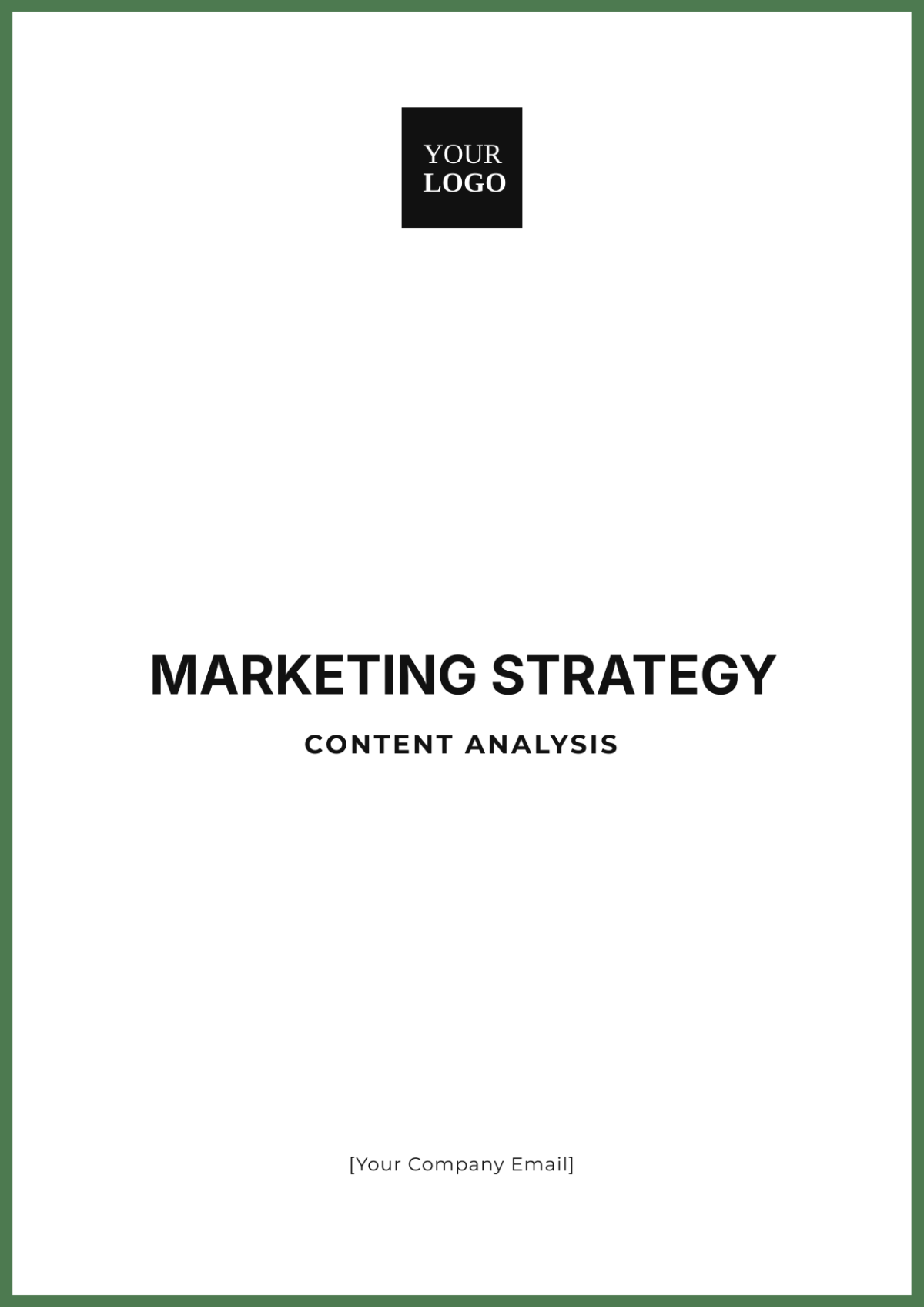Marketing Trends Content Analysis
Prepared By: [Your Name]
Introduction
In today’s rapidly evolving market landscape, staying abreast of marketing trends is vital for businesses aiming to maintain a competitive advantage. This analysis delves into the current and emerging marketing trends, their implications, and effective strategies to leverage these trends for optimal results.
I. Current Marketing Trends
1. Content Marketing
Content marketing remains a fundamental strategy for building brand awareness and fostering engagement with target audiences. Essential elements include:
Blogs and Articles: Insightful content positioning brands as thought leaders.
Video Content: Engaging and shareable videos that capture audience attention.
Infographics: Visually compelling graphics that simplify complex information.
Podcasts: Audio content that provides valuable insights and builds a loyal following.
2. Social Media Marketing
Social media platforms are continuously evolving, presenting new opportunities for brand-consumer connections. Key trends include:
Influencer Collaborations: Engaging in collaborative partnerships with influencers to bolster and improve both the credibility of our brand and the overall reach of our marketing efforts.
Live Streaming: Interactions through real-time video that significantly enhance both engagement and authenticity.
Stories and Reels: Content that is brief and designed to be short-lived, yet effectively promotes user interaction and enhances the visibility of the brand.
Social Commerce: Integration of shopping features within social platforms to streamline the purchasing process.
3. Personalization
Personalized marketing significantly enhances customer engagement and conversion rates. Effective approaches involve:
Customized Email Campaigns: Tailoring and modifying content to match the unique behaviors and stated preferences of each user.
Dynamic Website Content: Adapting various elements of a website dynamically in real-time based on the analysis and interpretation of data collected from visitors.
Behavioral Targeting: By analyzing user behavior, companies can deliver personalized ads and offers, boosting advertising effectiveness and customer engagement.
4. Data-Driven Marketing
Harnessing big data and analytics empowers businesses to make data-informed decisions and refine marketing strategies. Key aspects include:
Customer Data Platforms (CDPs): Centralizing customer data to enable personalized marketing.
Predictive Analytics: Employing historical data as a means to predict future customer behavior trends and patterns.
Performance Metrics: Tracking and analyzing marketing performance to optimize strategies.
II. Emerging Marketing Trends
1. Artificial Intelligence (AI) and Machine Learning
AI and machine learning are revolutionizing marketing by enhancing automation and providing deeper insights. Key applications include:
Chatbots and Virtual Assistants: Automating customer interactions and support.
Predictive Customer Service: Anticipating customer needs and preferences.
Content Generation and Curation: Utilizing AI to create and manage content efficiently.
2. Augmented Reality (AR) and Virtual Reality (VR)
AR and VR are creating immersive experiences that enhance engagement and brand loyalty. Notable applications include:
Virtual Try-Ons: Letting customers try products virtually.
360-Degree Videos: Providing a comprehensive view of products or locations.
Interactive Product Demos: Enabling users to interact with products in a virtual space.
3. Voice Search Optimization
As smart speakers and voice assistants gain popularity, optimizing for voice search becomes increasingly important. Strategies include:
Natural Language Processing (NLP): Understanding and responding to conversational queries.
Conversational Keywords: Incorporating phrases and questions that align with voice search patterns.
Structured Data Markup: Enhancing search engine understanding of content through structured data.
III. Strategies for Leveraging Trends
1. Integrating Marketing Channels
Creating a unified brand experience across various marketing channels ensures consistency and enhances customer satisfaction. Strategies include:
Omni-Channel Campaigns: Coordinating marketing efforts across all platforms for a seamless experience.
Unified Customer Profiles: Consolidating data from different touchpoints to gain a holistic view of customers.
Cross-Platform Analytics: Measuring and analyzing performance across multiple channels to inform strategy.
2. Focusing on Customer Experience
Delivering an exceptional customer experience drives long-term loyalty and advocacy. Essential tactics include:
Customer Journey Mapping: Understanding and optimizing the customer journey to enhance interactions.
User-Centric Design: Creating interfaces and experiences that prioritize user needs and preferences.
Personalized Interactions: Tailoring communications and offers to individual customer profiles.
3. Experimentation and Flexibility
In a rapidly changing environment, adopting a flexible approach and embracing experimentation is crucial. This can be achieved through:
Agile Marketing Methodologies: Using iterative processes for quick adaptation.
A/B Testing: Testing different strategies to identify the most effective approaches.
Real-Time Adjustments: Making on-the-fly adjustments based on real-time data and feedback.
IV. Conclusion
Marketing trends are continuously evolving, driven by technological advancements and shifting consumer preferences. By staying informed and adapting strategies accordingly, businesses can successfully navigate the complexities of modern marketing and thrive in an increasingly competitive landscape.

















































